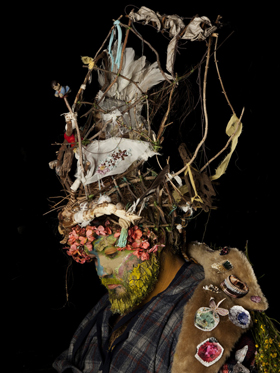The Art of Connection
IN 2015, VIVAPHOTO was ten years old. Based in Krasnodar in southern Russia, this collective of photographers organises, among other things, the annual PhotoVisa festival in the city. To celebrate their anniversary, VivaPhoto published a book looking back over the preceding decade. They asked Alasdair Foster to write a short text to include within the book – an appreciation of their work and ethos. This is the English text of that short essay…

The Art of Connection
OUR WORLD, in the way we come to know it through the process of living, is most deeply shaped not by nations or by corporations but by communities. It is a quiet but persistent shaping; one achieved simply through the way we live and, most importantly, how we connect with others.
Communities take many forms and occupy many spaces, but they are defined by human sharing and connectedness. They range from the extended family, friendship groups and neighbourhoods through professional and special-interest networks to larger concepts of the local, national and global community. In other words, community describes not a certain type or scale of group, but the gathering of people around a sense of shared experience that connects them. Community is then both a form of, and expression of, human interconnection. It is fractal in nature, operating in self-similar ways across a wide range of scales.
We all belong to many communities, because we are all multi-modal; we have not one role but many: partner, parent, offspring, sibling, lover, worker, fixer, maker, guardian, nurse, clown, psychologist, confessor… And so communities are by their nature woven into the fabric of our society by the people who draw the weft of human connection through the warp of history.
Unlike tribes, which define themselves by their mutual similarity and their rejection of the ‘other’, communities are not defined by their borders or their uniformity, but by their centre, their gravitational core, their heart … and by their unending interplay of personal experience. They are founded on connection, not exclusion.
VivaPhoto is a community: a group of photographers who recognise that it is through conversations of the visual that we might better know the world and know each other in all our rich variety. Their insights, as attested by the wonderful array of imagery in this book, are as diverse as they are inspiring. Their generosity is clear in that they seek not to promote their own creativity in isolation, but to stimulate awareness of the work of other photographers, especially those who are emerging and those who are in danger of being forgotten. They know that it is in the cultural conversation between diverse ways of seeing that we come not simply to know the world from new perspectives, but, importantly, to empathise with those whose experiences are not the same as ours. They have even created a platform for the presentation of work by people who are partially sighted, understanding that quality of experience and eloquence of expression are not simply functions of the sharpness of the eye, but rather the clarity of the mind and the depth of the heart.
Is perhaps in the development of PhotoVisa festival that one can most clearly see the qualities that make the VivaPhoto group so significant. Made possible through a partnership between the local and the national, with teams in Krasnodar and Moscow, PhotoVisa creates in the city of Krasnodar a lens through which to reconsider the world. International, national and local work come together in a rich and eclectic dialogue that nonetheless remains firmly rooted in the city itself. VivaPhoto and their colleagues understand that, as the celebrated Spanish artist Joan Miro declared:
“Art can only be truly universal when it is fundamentally local.”
And the global can only be comprehended and our lives fully realised when we understand that the future of the world is made possible through the flourishing of our communities and the enrichment that comes from sharing our experiences and being open to the experiences of others.
Alasdair Foster
Sydney – August 2015
For information on PhotoVisa 2013, go here…
For information on PhotoVisa 2015, go here…




